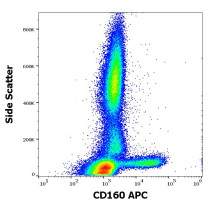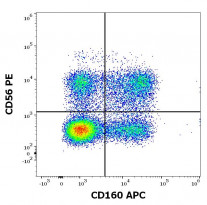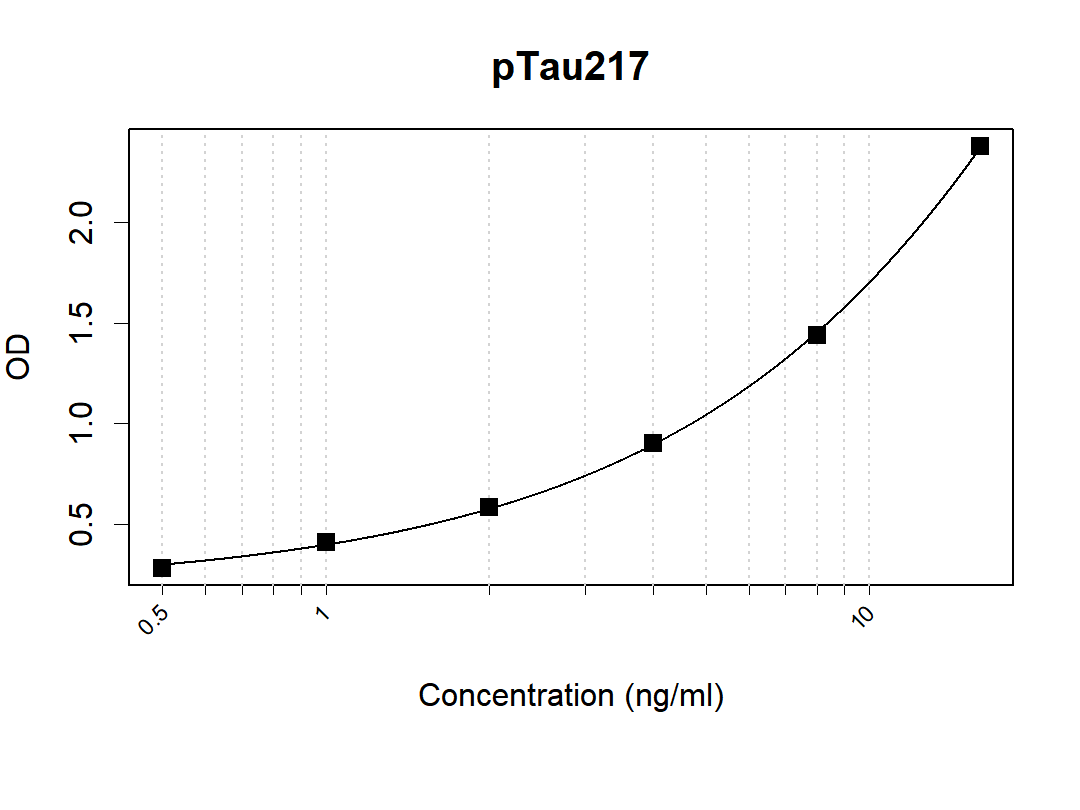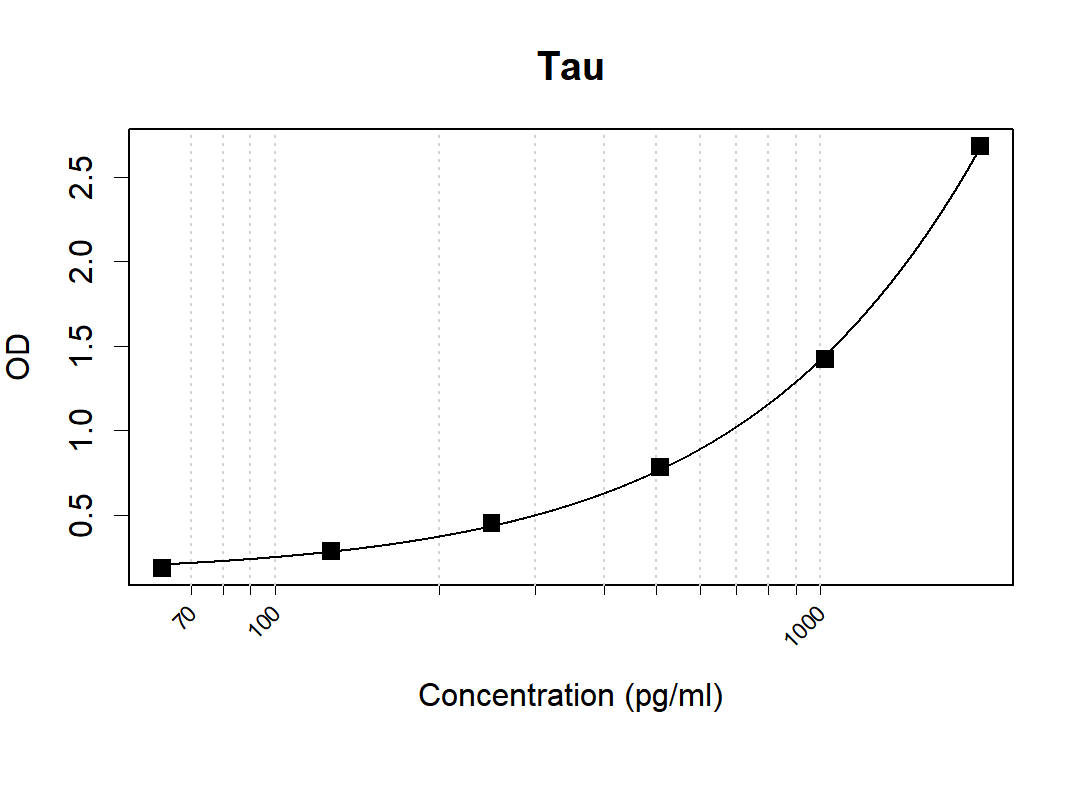anti-CD160 antibody [BY55] (APC)
| 产品描述 | APC-conjugated Mouse Monoclonal antibody [BY55] recognizes CD160 |
|---|---|
| 反应物种 | Hu |
| 应用 | FACS |
| 特异性 | The mouse monoclonal antibody BY55 recognizes an extracellular epitope of CD160, a 27 kDa glycoprotein expressed on NK cells, NK-T cells, intestinal intraepithelial lymphocytes, TCR-gamma/delta T cells and a small population of TCR-alpha/beta T cells. The antibody detects both GPI-anchored and transmembrane form of CD160. |
| 宿主 | Mouse |
| 克隆 | Monoclonal |
| 克隆号 | BY55 |
| 同位型 | IgM, kappa |
| 靶点名称 | CD160 |
| 抗原物种 | Human |
| 抗原 | Human NK cell line YT2C2. |
| 偶联标记 | APC |
| 別名 | BY55; Natural killer cell receptor BY55; NK28; NK1; CD antigen CD160; CD160 antigen |
| 应用建议 |
| ||||
|---|---|---|---|---|---|
| 应用说明 | * The dilutions indicate recommended starting dilutions and the optimal dilutions or concentrations should be determined by the scientist. |
| 形式 | Liquid |
|---|---|
| 纯化 | Purified |
| 缓冲液 | PBS and 15 mM Sodium azide. |
| 抗菌剂 | 15 mM Sodium azide |
| 存放说明 | Aliquot and store in the dark at 2-8°C. Keep protected from prolonged exposure to light. Avoid repeated freeze/thaw cycles. Suggest spin the vial prior to opening. The antibody solution should be gently mixed before use. |
| 注意事项 | For laboratory research only, not for drug, diagnostic or other use. |
| 数据库连接 | |
|---|---|
| 基因名称 | CD160 |
| 全名 | CD160 molecule |
| 背景介绍 | CD160 is an 27 kDa glycoprotein which was initially identified with the monoclonal antibody BY55. Its expression is tightly associated with peripheral blood NK cells and CD8 T lymphocytes with cytolytic effector activity. The cDNA sequence of CD160 predicts a cysteine-rich, glycosylphosphatidylinositol-anchored protein of 181 amino acids with a single Ig-like domain weakly homologous to KIR2DL4 molecule. CD160 is expressed at the cell surface as a tightly disulfide-linked multimer. RNA blot analysis revealed CD160 mRNAs of 1.5 and 1.6 kb whose expression was highly restricted to circulating NK and T cells, spleen and small intestine. Within NK cells CD160 is expressed by CD56dimCD16+ cells whereas among circulating T cells its expression is mainly restricted to TCRgd bearing cells and to TCRab+CD8brightCD95+CD56+CD28-CD27-cells. In tissues, CD160 is expressed on all intestinal intraepithelial lymphocytes. CD160 shows a broad specificity for binding to both classical and nonclassical MHC class I molecules. [provided by RefSeq, Jul 2008] |
| 生物功能 | [CD160 antigen]: Receptor on immune cells capable to deliver stimulatory or inhibitory signals that regulate cell activation and differentiation. Exists as a GPI-anchored and as a transmembrane form, each likely initiating distinct signaling pathways via phosphoinositol 3-kinase in activated NK cells and via LCK and CD247/CD3 zeta chain in activated T cells (PubMed:19109136, PubMed:11978774, PubMed:17307798). Receptor for both classical and non-classical MHC class I molecules (PubMed:9973372, PubMed:12486241). In the context of acute viral infection, recognizes HLA-C and triggers NK cell cytotoxic activity, likely playing a role in anti-viral innate immune response (PubMed:12486241). On CD8+ T cells, binds HLA-A2-B2M in complex with a viral peptide and provides a costimulatory signal to activated/memory T cells (PubMed:9973372). Upon persistent antigen stimulation, such as occurs during chronic viral infection, may progressively inhibit TCR signaling in memory CD8+ T cells, contributing to T cell exhaustion (PubMed:25255144). On endothelial cells, recognizes HLA-G and controls angiogenesis in immune privileged sites (PubMed:16809620). Receptor or ligand for TNF superfamily member TNFRSF14, participating in bidirectional cell-cell contact signaling between antigen presenting cells and lymphocytes. Upon ligation of TNFRSF14, provides stimulatory signal to NK cells enhancing IFNG production and anti-tumor immune response (By similarity). On activated CD4+ T cells, interacts with TNFRSF14 and downregulates CD28 costimulatory signaling, restricting memory and alloantigen-specific immune response (PubMed:18193050). In the context of bacterial infection, acts as a ligand for TNFRSF14 on epithelial cells, triggering the production of antimicrobial proteins and proinflammatory cytokines (By similarity). [CD160 antigen, soluble form]: The soluble GPI-cleaved form, usually released by activated lymphocytes, might play an immune regulatory role by limiting lymphocyte effector functions. [UniProt] |
| 细胞定位 | Cell membrane; Lipid-anchor, GPI-anchor. [UniProt] |
| 预测分子量 | 20 kDa |
ARG42301 anti-CD160 antibody [BY55] (APC) FACS image
Flow Cytometry: Human peripheral whole blood stained with ARG42301 anti-CD160 antibody [BY55] (APC) at 10 µl / 100 µl of peripheral whole blood.
ARG42301 anti-CD160 antibody [BY55] (APC) FACS image
Flow Cytometry: Human lymphocytes stained with ARG42301 anti-CD160 antibody [BY55] (APC) at 10 µl / 100 µl of peripheral whole blood and anti-CD56 [LT56] (PE) at 10 µl / 100 µl of peripheral whole blood.
ARG42301 anti-CD160 antibody [BY55] (APC) FACS image
Flow Cytometry: Separation of Human CD160 positive CD56 positive lymphocytes (red-filled) from neutrophil granulocytes (black-dashed). Human peripheral whole blood stained with ARG42301 anti-CD160 antibody [BY55] (APC) at 10 µl / 100 µl of peripheral whole blood.
 New Products
New Products




![anti-CD160 antibody [BY55] (APC)](/upload/image/products/ARG42301_FACS_3_210_205.jpg)
![anti-CD160 antibody [BY55] (APC)](/upload/image/products/ARG42301_FACS_1.jpg)
![anti-CD160 antibody [BY55] (APC)](/upload/image/products/ARG42301_FACS_2.jpg)
![anti-CD160 antibody [BY55] (APC)](/upload/image/products/ARG42301_FACS_3.jpg)

















